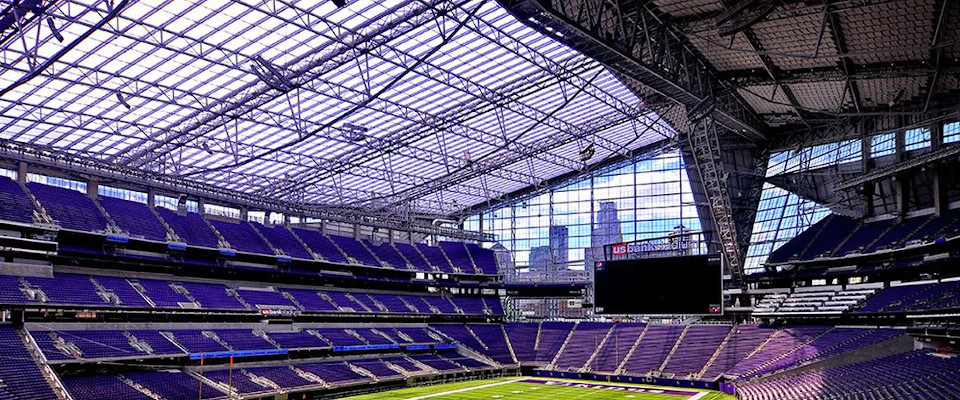June 3, 2020
Two shiny new venues costing nearly $7 billion will be opening (perhaps) later this fall. Both have roofs, meaning 11 of the 32 NFL teams can play home games indoors. The climate of the desert necessitates an indoor facility for the Las Vegas Raiders to offer heat protection during those early season games. But Los Angeles, the city with the league’s best weather, is also going indoors. If the Dodgers ever thought about putting a lid on Dodger Stadium, there’d be a revolt! Why do baseball purists scoff at the notion of playing baseball inside, while football fans embrace it?
1 Baseball is a pastoral summer game. Football is played in brisk autumn winds. (This is starting to sound like a George Carlin bit). During baseball season, those of us in northern climates are itching to be outside and soak in the precious warmth. During football season, we start to hunker down. It’s one of the reasons why football makes for great TV; it’s on when we want to be cozy instead of dealing with bitter, damp, grey November days. Plus we’ve become creatures of comfort, and it’s not comfortable sitting outside in many NFL markets in mid-December.
2 Baseball requires 81 home dates when there’s not a global pandemic. Football needs 10. A football stadium, therefore, has empty more dates to fill. A roof allows it to be used year-round for conventions, trade shows and other large-scale events that need to be inside. After all, a wet trade show booth is useless, and wind knocking down the exhibits would be a problem. Plus the football championship is played on one of the worst weather weeks of the year; great indoor facilities give cities not in Florida or California a chance to one of the biggest annual events, The Super Bowl.
3 Baseball isn’t played in the rain or extreme cold. Football will be played in anything but lightning. An NFL game is a full-day commitment given you’ll likely be tailgating in the elements before the game before moving to the stadium. After spending a few hours in cold weather, rainy weather or sweaty hot weather getting your drink on, many would rather move to comfort and get rejuvenated for the game itself. Or if it’s really ugly, and you’ve been in a bar getting acclimatized to indoor temps, the move outside is dreaded. And the NFL doesn’t want their product to be miserable.
4 Roofed stadiums tend to hold in the noise well. Home crowd noise can be a real advantage in football, as it makes it tougher for the offense to call their plays, and provides a bit of an adrenaline shot to the defense. Baseball crowd noise makes the vibe more exciting, but doesn’t really provide an advantage to one side or the other.
So why don’t they all have roofs? Cost for one. A roofed stadium is more expensive to build. You either need a deep pocketed owner or very generous public funding offer to add a lid. There’s also tradition: grizzled sport fans believe that the game should be played in the elements, and these fans often have a disproportionately loud voice. And subtly, TV prefers a game outside; the sport looks great on a sunny day, and mud or snow add great drama. But NFL franchises keep appreciating, meaning new owners have to be deep-pocketed; more fans are demanding the in-stadium experience better mimic the living room experience; and translucent roofs can still let in sun (the snow and mud would be out).
We aren’t scheduled for another new NFL stadium for a few years. But my guess is the next multi-billion dollar edifice built for Sunday football will have a roof.

